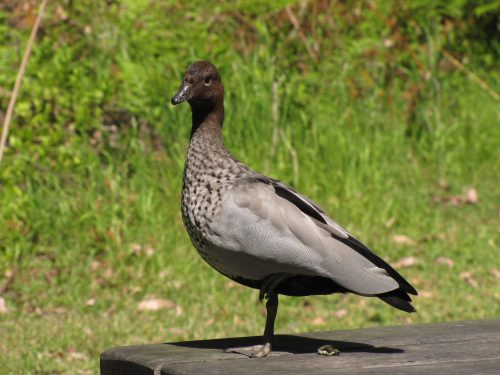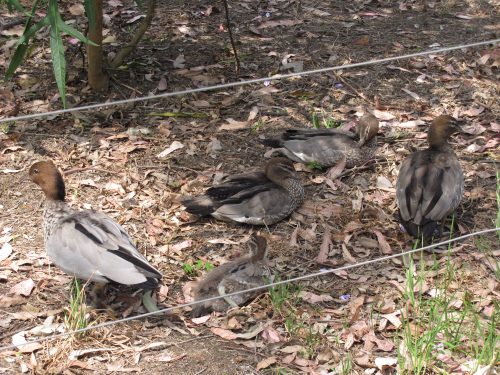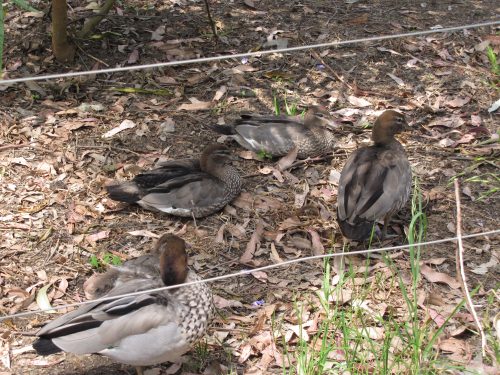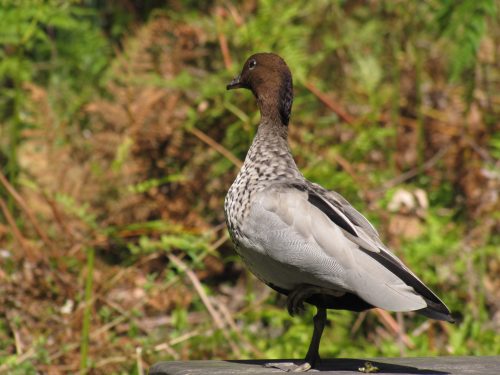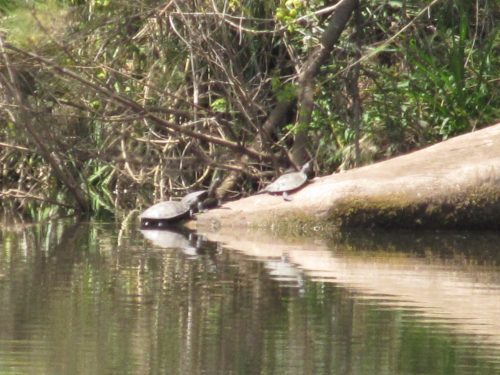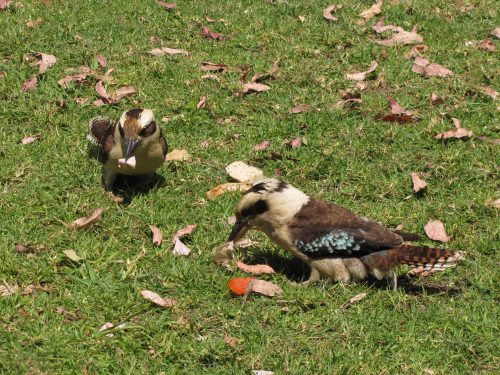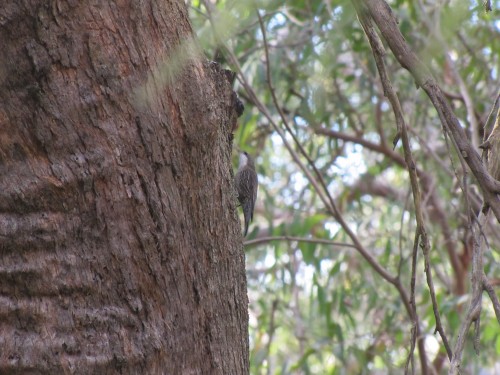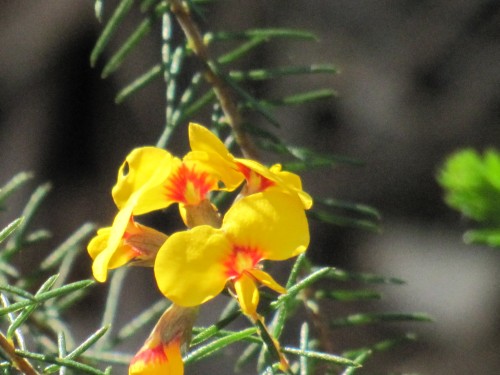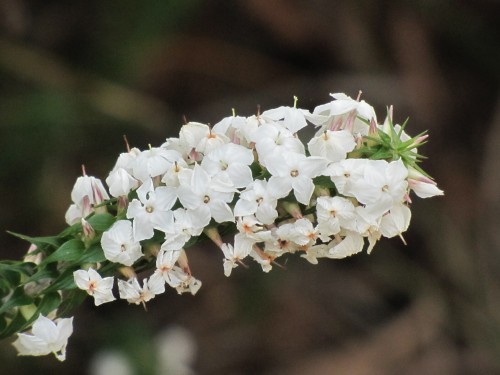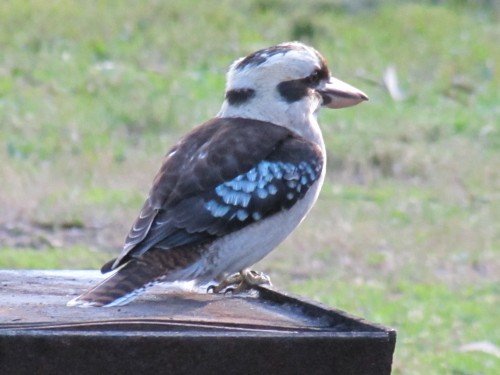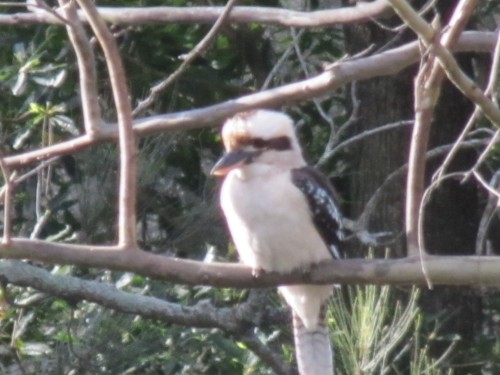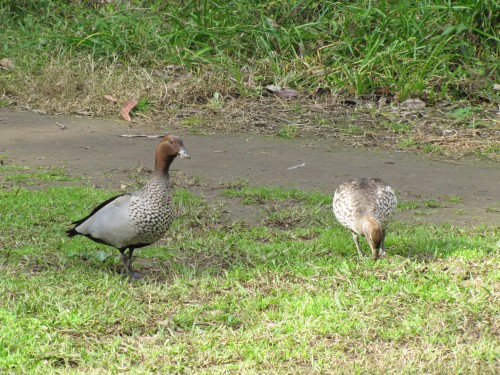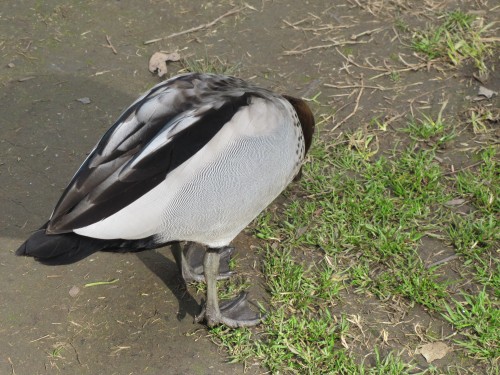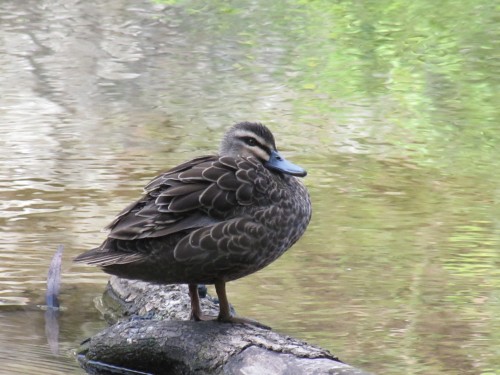Ducks in Lane Cove National Park
On our most recent trip to Sydney in October, we were primarily there to look after our two grandchildren (ages 8 and 5) during the school holidays. This is a very pleasant duty we enjoy several times a year. They are, however, very energetic children and so there comes a time during our stay when we look for opportunities to have some down time.
Thankfully, my son’s home is only a short drive to some very pleasant parks, including Lane Cove National Park, a mere ten-minute drive away – subject to traffic conditions, of course. On several occasions, we had a few hours to ourselves, so we packed the folding chairs, a picnic lunch, a thermos for a cuppa and some biscuits. I always remembered to take my binoculars and camera with as well.
At one point I noticed a small family of Australian Wood Ducks grazing on the grass near where we had our chairs located. I grabbed my camera and managed a few nice shots of them. At one point, the male of the group stood guard on one of the picnic tables (see photo at top). He was obviously keeping watch over his little family of three young ones.
Although the male was on guard, he didn’t seem all that perturbed that I had approached to within a few metres to take my photos. This national park is very popular, and there are hundreds of visitors daily and probably thousands every weekend, seeing it is so close to the well-populated Chatswood CBD. I have found other species equally unafraid of humans, including some Laughing Kookaburras who snatched some of my wife’s lunch the same day I took the photos on this post. (In a few days I will post an article, with photos of this incident.)
I should add here that this is the Australian Wood Duck, not to be confused with the Wood Duck, a north American species, and quite unrelated as far as I know.
The Australian Wood Duck is a common species found throughout much of Australia, except for the driest parts of the inland. It is usually found near waterways, lakes, swamps and dams, and in parks and ovals, but it also can be see grazing on grasses and pastures quite some distance from water.
Newsletter: just a reminder that I will be starting a monthly newsletter in the New Year. You can subscribe below the comments section at the bottom of each article.
Further reading:
Lunch snatching birds at Lane Cove National Park
As I write this we are in Sydney visiting our son and his family. We enjoy visiting him because it is a precious time of blessing as we spend time with our two grandchildren, ages eight and five. It is always great to see them growing and developing. During our times here in Sydney we have limited opportunities to go birding, so any free time we have is really appreciated. On this particular trip, we have visited Lane Cove National Park on several occasions, both times for lunch. This national park is only about ten minutes away by car, depending on the volume of traffic and time of day.
On a recent visit, we set up our folding chairs in a shady spot with a good view of the river. We placed our picnic lunch on the side table of our chairs. Before we could take a bite I observed two Long-necked Turtles sunning themselves on a log protruding from the water (see photo above). I handed my binoculars to my wife so that she could have a closer look at them.
That was when we were robbed!
A cheeky Laughing Kookaburra swooped down from a nearby branch. It snatched a part of my wife’s sandwich and flew off with it. As it dropped the sandwich makings on the grass nearby, another kookaburra flew down to share in this ill-gotten booty. Not long after this, as they were squabbling over their prize, a Noisy Miner joined in the fun. Noisy Miners are one of our native honeyeater species; they can be quite aggressive towards smaller birds and they are obviously quite at home matching it with the much larger kookaburras.
My wife was incensed. She had lost a portion of her lunch to a thieving bird. Later, she read a small plaque on one of the park picnic tables. In fact, all tables have copies of the same message: “Visitors are asked not to feed the birds and animals” or words to that effect. Perhaps the rangers should also put up signs instructing the local wildlife not to snatch human food.
Naturally, we guarded the rest of our lunch very carefully. No sense in losing any more of it. A few minutes later, two Brush-turkeys came mooching around. They looked as if they also wanted a handout. In fact, I held out my empty palm towards one of them and it approached to within a few centimetres of my hand. It left disappointed.
Please do not feed the birds
I think it would be prudent of me to make mention of the fact that it is strongly recommended that people in parks, gardens and even their own gardens refrain from feeding our native birds. Most human food – especially bread – is actually quite dangerous – even deadly – for our birds. By all means, provide fresh drinking water in a birdbath, but resist the desire to feed them. It’s for their welfare.
Good birding,
Trevor
PS Go to below the comments section to subscribe to my monthly newsletter. These newsletters will contain extra news items and special insights and photos not available in my regular posts.
White-throated Treecreeper
On my recent visit to the Lane Cove National Park in Sydney a spent a half hour or so slowly walking along one of the roads through the park, trying to find and photograph some of the birds present in the park. It was a rather frustrating time and although I managed to add a few birds to my list, I wasn’t very successful at getting many photos.
The above shot of a White-throated treecreeper – a poor shot at that – was the only one I can use here. So instead of returning to the car without any photos, I turned my attention to some of the flowers.
One hot bird?
Near the end of our recent visit to the Lane Cove National Park in Sydney I saw this Laughing Kookaburra, first on a branch of a nearby tree (see below), and then on a nearby barbecue plate.
Fortunately nobody had been to that barbecue to cook their lunch that day, otherwise we would have had one very hot bird!
On a more serious note: once several decades when cooking a barbecue lunch for my family in Western Australia a kookaburra swooped out of a nearby tree and grabbed a sausage from the hot plate. I was not happy at the time, but in recent years I delight in telling this little story.
By the way, Laughing Kookaburras are not native to WA; they were introduced in the 1890s and have spread over much of south west Western Australia. On the other hand, Blue-winged Kookaburras can be found in the northern parts of WA.
Further reading:
- Laughing Kookaburra comes to lunch – an account of another kookaburra seeking human food – also in the Lane Cove National Park a few years ago.
Ducks in the Lane Cove National Park
The Lane Cove National Park in Sydney has the Lane Cove River flowing through it. Many areas near the banks of the river have been cleared of vegetation to accommodate ovals, picnic grounds and parking space for the many visitors who frequent the park daily. The water and the picnic areas naturally attract a range of ducks.
On our visit a few months ago I only recorded two species: Australian Wood Ducks and Pacific Black Ducks. The photo above shows the male on the left and the female on the right. The photo shows – in part – the big differences in the plumage between the male and female. The photo below shows some of the fine markings on the male bird.
Today’s last photo is of a Pacific Black Duck, one of our most common ducks.
